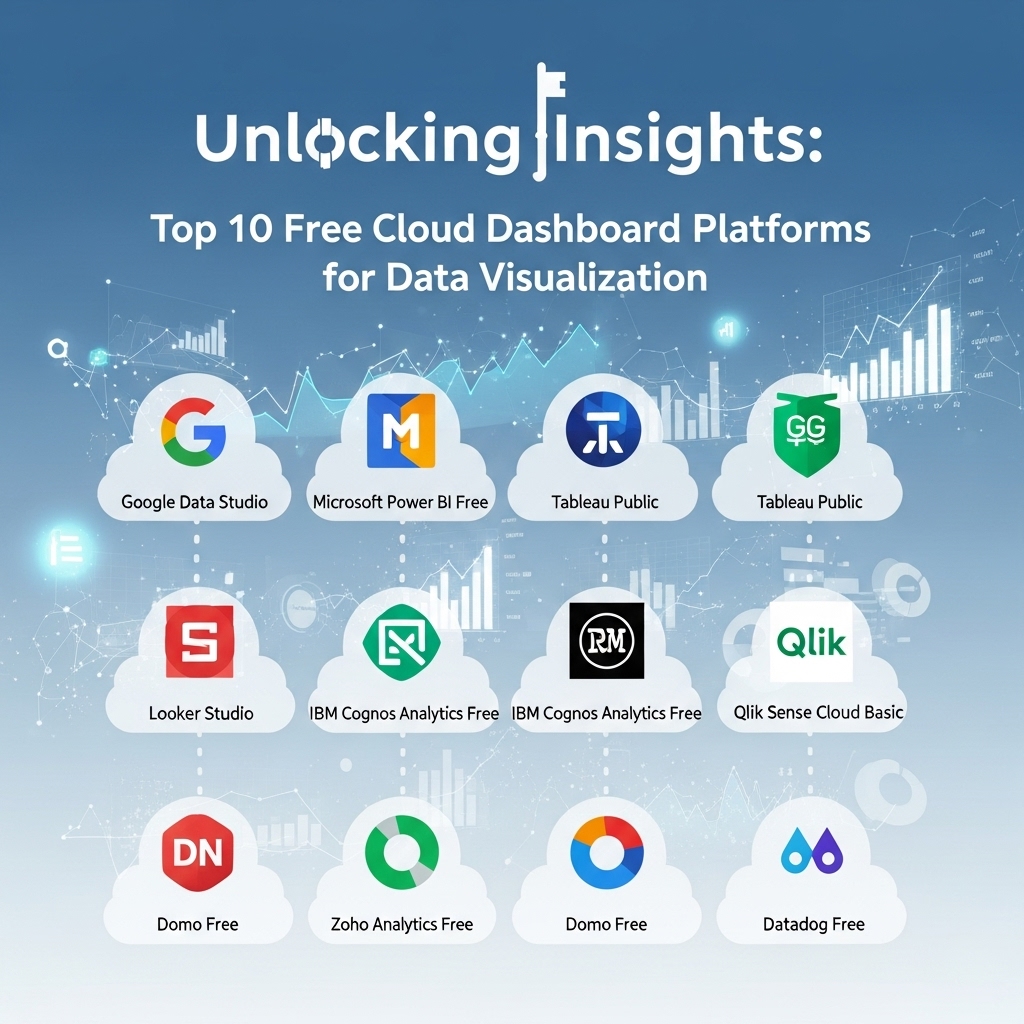
Introduction to Cloud Dashboards
Data visualization is a crucial aspect of any business or organization, as it enables stakeholders to make informed decisions based on insights gleaned from data. Cloud dashboard platforms have become increasingly popular in recent years, as they provide a centralized location for data visualization and analysis. These platforms offer a range of benefits, including scalability, flexibility, and cost-effectiveness. In this article, we will explore the top 10 free cloud dashboard platforms for data visualization, highlighting their key features and benefits.
What are Cloud Dashboards?
Cloud dashboards are web-based platforms that allow users to create and share interactive dashboards, which are customized interfaces that display key performance indicators (KPIs) and other important metrics. These dashboards can be used to track and analyze data from various sources, including databases, spreadsheets, and cloud services. Cloud dashboards provide a range of tools and features, including data visualization, reporting, and collaboration, making them an essential tool for businesses and organizations of all sizes.
Benefits of Free Cloud Dashboard Platforms
Free cloud dashboard platforms offer a range of benefits, including cost savings, ease of use, and flexibility. These platforms are ideal for small businesses, startups, and individuals who want to create and share dashboards without incurring significant costs. Additionally, free cloud dashboard platforms often provide a range of features and tools, including data visualization, reporting, and collaboration, making them a great option for those who want to try out cloud dashboard technology without committing to a paid plan.
Top 10 Free Cloud Dashboard Platforms
Here are the top 10 free cloud dashboard platforms for data visualization:
- Google Data Studio: A free platform that allows users to create interactive dashboards and reports using data from Google Analytics, Google Sheets, and other sources.
- Microsoft Power BI: A business analytics service that provides a range of tools and features, including data visualization, reporting, and collaboration.
- Tableau Public: A free platform that allows users to create and share interactive dashboards and stories using data from various sources.
- Dash by Plotly: An open-source platform that allows users to create and share interactive dashboards using Python and other programming languages.
- Redash: An open-source platform that allows users to create and share dashboards using data from various sources, including databases and APIs.
- Metabase: An open-source platform that allows users to create and share dashboards using data from various sources, including databases and spreadsheets.
- Amazon QuickSight: A fast, cloud-powered business intelligence service that provides a range of tools and features, including data visualization and reporting.
- Domo: A cloud-based platform that provides a range of tools and features, including data visualization, reporting, and collaboration.
- Sisense: A cloud-based platform that provides a range of tools and features, including data visualization, reporting, and collaboration.
- Geckoboard: A platform that allows users to create and share dashboards using data from various sources, including databases and APIs.
Key Features to Consider
When selecting a free cloud dashboard platform, there are several key features to consider. These include:
- Data sources: The platform should support a range of data sources, including databases, spreadsheets, and cloud services.
- Data visualization: The platform should provide a range of data visualization tools and features, including charts, tables, and maps.
- Collaboration: The platform should provide collaboration tools and features, including real-time commenting and sharing.
- Security: The platform should provide robust security features, including data encryption and access controls.
- Scalability: The platform should be scalable, allowing users to easily add or remove users and data sources as needed.
Examples of Cloud Dashboard Use Cases
Cloud dashboards can be used in a range of contexts, including:
- Business intelligence: Cloud dashboards can be used to track and analyze business metrics, such as sales, revenue, and customer engagement.
- Marketing: Cloud dashboards can be used to track and analyze marketing metrics, such as website traffic, social media engagement, and lead generation.
- Operations: Cloud dashboards can be used to track and analyze operational metrics, such as inventory levels, supply chain performance, and equipment maintenance.
- Finance: Cloud dashboards can be used to track and analyze financial metrics, such as revenue, expenses, and cash flow.
Conclusion
In conclusion, free cloud dashboard platforms offer a range of benefits, including cost savings, ease of use, and flexibility. The top 10 free cloud dashboard platforms for data visualization provide a range of tools and features, including data visualization, reporting, and collaboration. When selecting a platform, it's essential to consider key features, such as data sources, data visualization, collaboration, security, and scalability. By using a free cloud dashboard platform, businesses and individuals can gain valuable insights into their data, make informed decisions, and drive success.
